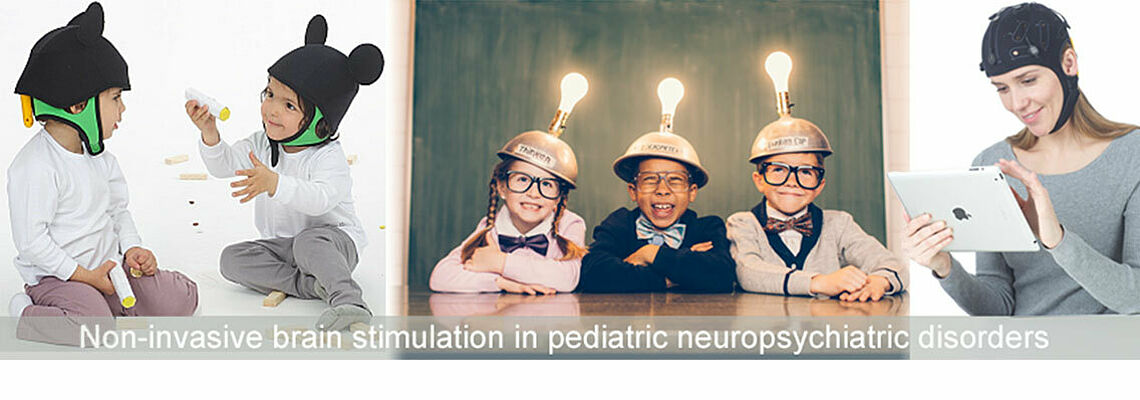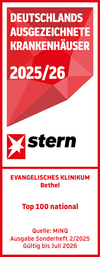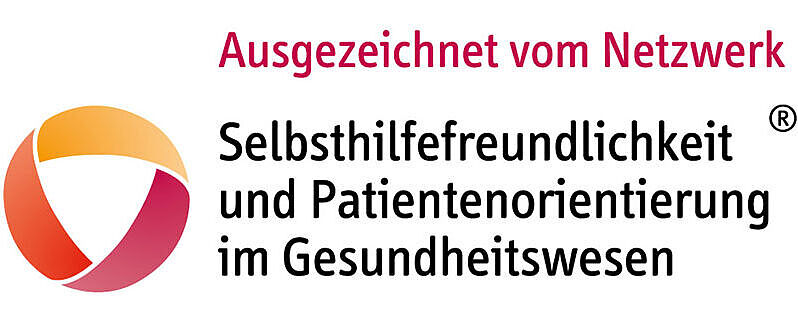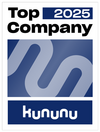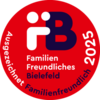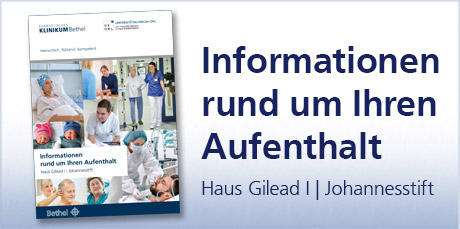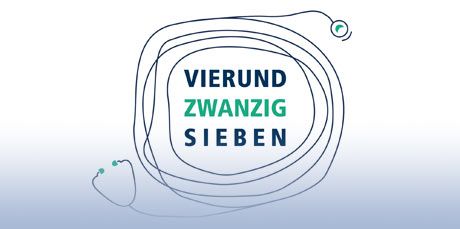STIPED – STImulation in PEDiatrics

Stimulation bei Kindern
STIPED is an ambitious global partnership which will result in five randomized double-blind sham-controlled phase I and IIa proof-of-principle clinical trials establishing effect sizes and studying safety and tolerability of tDCS on cognitive and behavioural outcomes in children and adolescents with ADHD and ASD.
Brain Stimulation
The electric phenomenon are known since the antiquity, the first therapeutic use of current was documented in the year 46 before the Nativity. At that time the scholar Scribonius Largus treated disorders like headaches by placing live electric ray at the pain location. The electric discharge stunned the pain. Moreover, centuries later the research of Luigi Galvani (1773-1798) und Alessandro Volta (1745-1827) heralded the century of Electricity. The first application of electrical current for therapeutic purposes was utilized by the nephew of Galvanis, Giovanni Aldini (1762-1834), who developed a therapy option for "melancholic" patients (possibly the first treatment of depression by using transcranial direct current stimulation). But in the 19th century the knowledge and application of electric currents was not widespread. Only in 1930 the new findings for the electroconvulsive therapy were published and the therapeutic use of weak direct current became a new focus in science. Until today brain stimulation appears in our daily life, for example at the last Olympic Games in 2016 it was assumed that the US athletes used brain stimulation to perform better at the competition.
Over time the experimental settings became more systematically and methodically thought out. In the first decade of the 21th century, a new era of non-invasive brain stimulation began. Nitsche and colleges demonstrated the possibility of non-invasive modulation of motor cortex excitability by the application of weak direct current through the scalp. The excitation could be achieved selectively by anodal stimulation, and inhibition by cathodal stimulation. Since, effects of transcranial direct current stimulation (tDCS) on a great variety of brain functions (e.g. primary sensory functions, motor and executive functions, memory and attention, emotion regulation) have been demonstrated repeatedly. Over the last years the number of studies, which demonstrate significance of tDCS in treatment of neurological and psychiatric disorders is increasing.
It is important to distinguish between different kinds of brain stimulation. First of all, there is deep brain stimulation, which is related to implantation of stimulation electrodes in deep brain structures through a surgical procedure in order to treat a variety of disabling neurological disorders (for example Morbus Parkinson or Tourette syndrome). Deep brain stimulation in anology to a heart pacemaker uses an implanted, battery-operated medical device (neurostimulator). This kind of invasive stimulation is not relevant for STIPED.
Another kind of electrical stimulation of the brain is the non-invasive transcranial stimulation, which uses weak electric currents (1 mA or 2 mA). The stimulation is applied on the skull and modulates activity of cortical neurons by influencing membrane excitability. During the stimulation participants recognize only a light itching especially during the turn on and turn off of the stimulation device. Today non-invasive brain stimulation has a significant impact on clinical applications like in the therapy of depression, auditory and verbal hallucinations, chronic pain, epilepsy and migraine as well as for cognitive enhancement.
The used currents are divided in the field of transcranial direct currents (tDCS) and transcranial alternate currents (tACS). In STIPED we will apply tDCS.
Transcranial direct current stimulation is a non-invasive, highly compatible and painless therapy option. The current penetrates the skull and enters the brain from the anode, travels with very small electric current through the tissue, and exits via the cathode. The electric current is usually not higher than the current of for example toy trains, but the electricity could positively influence functions of the brain. The kind of electrode montage has a relevant influence on the effects of tDCS. The classic bilateral montage includes two big sponge electrodes, which induce stimulation. The skin contact is achieved with water-moistened synthetic sponges or special electrodes gel. Before placing the electrode the skin of the head needs to be cleaned and degreased thoroughly to ensure ideal electrical current flow. The electrodes are connected with the device, which produces a constant current strength of 1-2mA. The gel-based electrode has a size of approximately 1cm² and the sponge electrodes of 25cm². Furthermore, computer-based calculated algorithms could determine the optimal electrode montage so that the ideal neuronal activity in the targeted brain structure can be achieved.
There are several advantages of tDCS compared with other treatment options, which underline the high potential of the method for treatment of neuropsychiatric disorders:
An important prerequisite for the clinical application of tDCS is the presence of after-effects, including the possibility to induce long-lasting positive changes of brain function as a basis of sustained clinical improvement. Minutes of stimulation with both anodal and cathodal tDCS may elicit changes of cortical excitability lasting for hours, depending on the site of stimulation and of the associated brain function (Nitsche & Paulus, 2001). The duration of after-effects depends on stimulation intensity, baseline level of excitability, changes in neurotransmitter function, and the association of stimulation with a particular task or training (Liebetanz et al., 2002). Note that tDCS performed over a number of consecutive days (5 – 10 days) may induce changes in cortical plasticity lasting for months (Brunoni et al., 2013).
Different animal and human studies have demonstrated repeatedly that tDCS is a safe stimulation technique which, when recommended parameters are used, does not produce any negative short or long-term structural or functional changes in the brain (Agnew & McCreery, 1987; Nitsche et al., 2005; Nitsche et al., 2008; Liebetanz et al., 2009). TDCS is characterized by the best tolerability among techniques of brain stimulation (Brunoni et al., 2011). Only a mild tingling and itching sensation under the stimulating electrodes have been described as the most common adverse effects which have only been reported by a minority of subjects, even when children were investigated (Brunoni et al., 2011; Krishnan et al., 2015). We recently investigated the side effects of tDCS systematically in different age groups and demonstrated that the 1 mA tDCS is safe and tolerated well by young subjects (Moliadze et al., 2015a). Moreover, tDCS does not cause serious adverse effects in young clinical populations, even if applied daily over a number of consecutive days (Mattai et al., 2011; Schneider & Hopp, 2011; Munz et al., 2015; Breitling et al., 2016; Sotnikova et al., 2016). Thus, all published studies support that tDCS may be safely applied in all ages.
TDCS is very easy to perform. Every patient and family will be able to apply tDCS by themselves after a sufficient instruction/training and in the case of regular supervision or remote control of application. The method has high potential to be applied in a home-based setting,
increasing compliance of patients and reducing costs because clinic visits become unnecessary (Charvet et al., 2015; Kasschau et al., 2015; O'Neill et al., 2015).
Reliable placebo (sham) stimulation is possible so that the method may be applied in randomized, double-blind, sham-controlled studies (see, for example, Brunoni et al., 2013).
TDCS is cost-effective. The costs of tDCS devices and application are ten times lower than those for transcranial magnetic stimulation and a hundred times lower than for deep-brain stimulation. The unit price and service is not more than 5,000 euros. It is substantially lower than the annual direct and indirect costs of ADHD or ASD, reducing the economical impact by more than 50%. There are no additional costs during each session of stimulation making this kind of treatment very attractive for patients and the health care system.
Why may tDCS be effective in patients with attention deficit hyperactivity disorder (ADHD)?
As demonstrated in a great number of neurophysiological and neuroimaging studies, clinical symptoms in ADHD (inattention, impulsivity and hyperactivity) and associated neuropsychological deficits (for example deficits in working memory, sustained attention, impulse control etc.) can be attributed to a reduced activity in prefrontal brain regions, basal ganglia, and the cerebellum (Rubia, 2011; Cubillo et al., 2012; Rubia et al., 2014). Hypoactivation of the left dorsolateral prefrontal cortex (DLPFC) and the right inferior frontal gyrus (IFG) are closely associated with symptom load in ADHD and have been shown to normalize in the course of effective pharmacological and behavioral treatment (Siniatchkin et al., 2012; Rubia et al., 2014). It can be hypothesized that normalization of activity in these key brain areas could cause improvement in the clinical course of ADHD. This normalization can be achieved using anodal tDCS (Antal et al., 2011; Keeser et al., 2011). In a previous study, Sotnikova and colleagues demonstrated that anodal tDCS during a working memory task performed during functional MRI induced a significant increase in activity in the left DLPFC (under the stimulating electrode), the whole network of working memory, and executive control in children with ADHD (Sotnikova et al., 2017). This increase in prefrontal activity was accompanied by a significant improvement in neuropsychological functioning in patients. Moreover, Soff and colleagues were able to demonstrate that tDCS applied over 5 consecutive days in children with ADHD led to a significant reduction of ADHD symptoms, primarily inattention and hyperactivity, compared with sham stimulation (Soff et al., 2017). This positive clinical effect of stimulation lasted for one week after the end of stimulation, demonstrating a long-lasting clinical effect of tDCS. The same is true for tDCS over the right IFG. In a recent study, anodal tDCS over the right IFG was related to a significant improvement in interference control in adolescents with ADHD (Breitling et al., 2016). The high potential of tDCS for the treatment of ADHD has been supported by other authors as well. Leffa and colleagues (2016) stimulated spontaneous hypertensive rats (an animal model of ADHD) over 8 consecutive days using tDCS over the prefrontal cortex and caused a significant improvement of working memory. Soltaninejad et al., 2015 and Bandeira et al., 2016 applied anodal tDCS over the left DLPFC in children and adolescents with ADHD and demonstrated an increase in correct responses during a task for sustained attention, improved signal detection, ability to switch between an ongoing activity and a new one, and more efficient processing speed. All these studies provide clear evidence that anodal tDCS over both the left DLPFC and right IFG may be potentially effective in treating patients with ADHD. The findings of these studies, however, are compromised by a number of methodological problems. Firstly, all studies only included a very small number of patients. Therefore, conclusions from these studies have to be made with caution. The STIPED consortium would be able to recruit a sufficient number of patients in order to test the safety and efficacy of tDCS in patients with ADHD. Secondly, it is still unclear which region, the left DLPFC or right IFG, represents the best target for tDCS in ADHD. Thirdly, some patients in the described studies did not respond to stimulation, indicating individual differences in sensitivity to tDCS. The STIPED consortium will address all these methodological problems and will predict individual responses to tDCS by developing neurophysiological biomarkers and a better understanding of the mechanisms of tDCS in ADHD. Finally, it can be suggested that the age of subjects and the stimulation setting may have an influence on the results of tDCS. Cosmo et al. (2015) applied anodal tDCS in adults with ADHD and was not able to demonstrate any significant effects of stimulation on sustained attention and impulsivity. Because Cosmo et al. (2015) investigated adults and applied tDCS not during but before a neuropsychological task, it remains to be investigated whether these two aspects may explain the lack of tDCS efficacy in his study. The effect of age and setting will be studied systematically in the STIPED project.
Why may tDCS be effective in patients with autism spectrum disorder (ASD)?
ASD is currently conceptualized as a disorder of abnormal neural connectivity underlying the disorder-specific social communication impairments and related neurocognitive aspects, such as impaired theory of mind, self-other perspective taking, visuo-spatial and visuo-motor impairments (Minshew & Williams, 2007; Casanova et al., 2015). It has been shown that tDCS induces changes in intra- and interhemispheric connectivity (Polania et al., 2011; Polania et al., 2012). Consequently, tDCS presents an innovative treatment tool, which might be an effective alternative to pharmacological and behaviorally based treatment in ASD. In fact, recent studies provide evidence of improvement in autistic symptoms and syntax acquisition through tDCS over the DLPFC (Schneider & Hopp, 2011; Amatachaya et al., 2014; D'Urso et al., 2015). Current studies show that, besides a network relating to language and comprehension, another network relating to oneself and self-referential processing plays a central role in the neural pathophysiology of ASD (Venkataraman et al., 2015). The latter network seems to be closely related to the ASD-typical deficits in social cognition. This network consists of structures such as the superior temporal sulcus, right posterior superior temporal sulcus, and the temporo-parietal junction (TPJ). The TPJ is a key brain region within the ‘‘social brain’’ (Frith & Frith, 2010) and relates to many social cognitive functions which are affected in individuals with ASD, such as theory of mind (Vogeley et al., 2001; Kelly et al., 2014), attention, visuo-motor processing, speech and language, self-other differentiation, and social cognition (Williams et al., 2006; Geng & Vossel, 2013; Donaldson et al., 2015). Moreover, there is evidence for under activation and under connectivity of the TPJ in subjects with ASD compared to healthy controls as indicated by functional and structural MRI studies (Muller et al., 2011; Kana et al., 2014). Two key studies in healthy subjects suggest that tDCS over the TPJ improves social cognition (Santiesteban et al., 2012; Ye et al., 2015). Consequently, applying tDCS over the TPJ is a highly promising approach to improve social cognitive skills in ASD. Given the lack of a pharmacological treatment of the core symptoms of ASD, tDCS represents a promising treatment tool especially for targeting social interaction and social cognition in ASD.
Why may tDCS be effective in children?
In previous studies, members of the STIPED consortium systematically investigated effects of tDCS on the excitability of occipital and motor cortex, lDLPFC and rIFG. They demonstrated that 1 mA anodal tDCS caused a significant increase in cortical excitability in children and adolescents, which is comparable with the excitability changes observed in adults. These excitability changes were associated with significant changes in behavioral and neuropsychological measures (Siniatchkin et al., 2012; Prehn-Kristensen et al., 2014; Moliadze et al., 2015; Munz et al., 2015). Therefore, tDCS as planned for STIPED, produces robust and valid effects in young subjects. Moreover, it can be even suggested that tDCS may be more effective in children than in adults. Studies which focused on modeling the density and spatial distribution of electrical currents following tDCS in the brain of children have demonstrated that the smaller conductivity of the skull tissue, different white and gray matter content and CSF volume as well as smaller brain-scalp distance in children compared to adults may increase the transmission of current from scalp to brain and produce more pronounced or even paradoxical effects (Beauchamp et al., 2011; Datta et al., 2011; Minhas et al., 2012; Kessler et al., 2013). It can be hypothesized: the younger the subjects, the smaller the conductivity of the skull, the lower gray matter volume and functional connectivity of the brain, the better will be tDCS outcomes. It is obvious that developmental changes in head anatomy and macro- / microarchitecture and functional features of the developing brain would influence effects of tDCS. However, these influences have not been investigated systematically yet and become a matter of our methodical research in STIPED.
Which problems of tDCS have to be solved in order to facilitate application of tDCS for neuropsychiatric disorders and how are these problems addressed in STIPED?
Problem 1: Parents and children may have concerns and reservations with respect to tDCS and have little acceptance of the suggested treatment. Indeed, although tDCS represents a promising treatment option with a rising potential and rapid development in the last few years, the method may appear to be too innovative to be accepted by patients and their families without reservation. In particular, brain stimulation in children may yield resistance on different levels: from the patients themselves, from the family environment, from health care providers and teachers, or from society. In order to understand how beliefs, attitudes, intentions and concerns toward tDCS may influence acceptance of the treatment on different levels, a specifically designed study focusing on ethical aspects of tDCS will be carried out in the framework of STIPED.
Problem 2: Patients may respond differently to tDCS demonstrating interindividual variability of effects of brain stimulation. Indeed, age, brain development, functional and anatomical features of the brain and head may influence the density and distribution of electrical currents and the effects of stimulation. Moreover, the level of individual cortical excitability and preactivation as well as the structural and default functional organization of the brain may influence results of tDCS (Horvath et al., 2014). In order to be effective, tDCS has to be adjusted individually. To achieve this purpose, 1) the effect of age and developmental stage of the brain on efficacy of tDCS will be investigated in STIPED, 2) modeling of electrical current will be studied in specific work packages, 3) and predictors for effects of brain stimulation will be determined in sub studies.
Problem 3: Although effective, tDCS could run into problems during the integration into the clinical routine and health care system. Indeed, if tDCS has to be performed on 10 consecutive days, it will be difficult to provide the treatment in the hospital setting because of the high costs for patients and families, a fact, which would have a negative impact on compliance. Therefore, tDCS has to be easy to perform, best of all at home and every day. However, home-based tDCS treatment has not been developed for children and adolescents yet; it is a very rare treatment option even for adults, and therefore holds some challenges, which have to be addressed (Charvet et al., 2015; Kasschau et al., 2015; O'Neill et al., 2015). Firstly, there is only a narrow range of stimulation parameters which are considered to be safe (Brunoni et al., 2011). A new device for home-based treatment has to limit stimulation parameters, control intensity and the duration of stimulation (Charvet et al., 2015). Secondly, the wrong placement of electrodes and the wrong montage would reduce efficacy (Salvador et al., 2015a; Salvador et al., 2015b; Curado et al., 2016). A specific control system for the placement of electrodes has to be developed. Finally, the compliance to perform tDCS systematically at home may vary. In order to control and, if necessary, improve compliance, the stimulation systems have to be integrated via remote control of the clinical course of the particular neuropsychiatric disorder. The remote-control system will monitor application of tDCS and symptoms of patients and, in case of insufficient compliance, indicate to a physician that he/she should contact the patient and address his/her motivation (telemental health service). All these problems will be solved in STIPED.
Problem 4: Mechanisms of tDCS on complex cognitive functions are poorly understood. Different studies have shown that the stimulation of one particular area may produce changes in activity, not only under the stimulating electrode but also in remote brain areas and possibly in the whole network associated with a function induced before or during the stimulation (Sotnikova et al., 2016). Moreover, it seems likely that tDCS may exert an influence on functional connectivity in the brain (Polania et al., 2011; Polania et al., 2012). And, finally, event-related potentials, which reflect sensory and cognitive processes associated with sources in brain regions stimulated by tDCS, show changes after compared to before the treatment (e.g. Keeser et al., 2011; Zaehle et al., 2011). If activity in specific neuronal networks, connectivity, and cortical information processing are disturbed in neuropsychiatric disorders, tDCS may cause their normalization and, in such a way, lead to clinical improvement. This hypothesis will be studied in STIPED. Indeed, patients with both ADHD and ASD have demonstrated abnormalities in neuronal network connectivity and cortical information processing (Minshew & Williams, 2007; Castellanos & Proal, 2012; Kroger et al., 2014; Casanova et al., 2015; Olbrich et al., 2015; Gamma & Kara, 2016). Normalization of connectivity and event-related potentials may explain effects of tDCS in ADHD and ASD and differentiate responders from non-responders.

STIPED has received funding from the European Union’s Horizon 2020 research and innovation programme under grant agreement No 731827.

